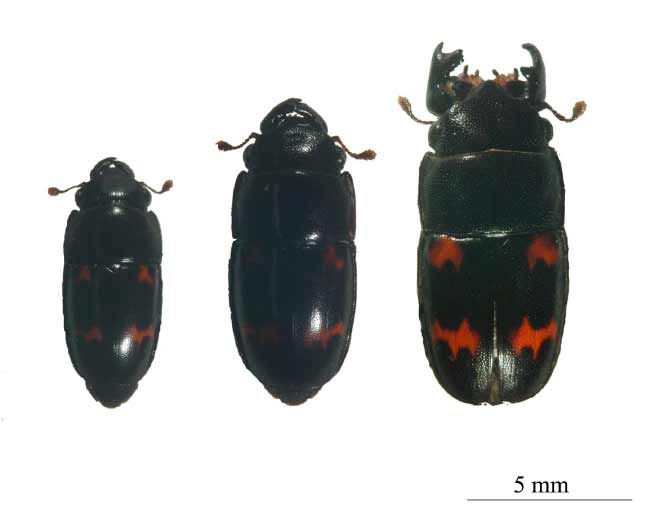Sex Strategies Come in Small, Medium, Large

In the beetle world, it's the big guys who often win in the mating game, chomping their larger jaws down on the competition to fend them off.
But biggest is not always best. All sizes of male sap beetles — large, medium and small — can get lucky. Each size adopts a different tactic in finding a mate, evolutionary ecologist Takahisa Miyatake at Okayama University in Japan and his colleagues found.
These beetles are found all throughout Japan. They live off the sap exuding from oak trees.
The largest male beetles wait for females at feeding areas — in the case of experiments, thin banana slices — and then fight for the right to mate. In those cases, the males with the biggest jaws stand the best chance of winning.
The medium-sized beetles — too small to beat the bigger males — have developed wings relatively larger than those of their larger counterparts. So the middleweights use their wings to search for feeding sites that are unoccupied by large males and woo with females there.
The smallest males adopt yet another completely different tactic — they rely on their relatively larger testicles. They stay at feeding sites with big males and then sneakily attempt to have sex with females behind the backs of the other males. They can then produce sperm that is more competitive than that of the bigger males.
While scientists had known that small and large male sap beetles (Librodor japonicus) employed different strategies, they had not known of the unique tactic of the medium-sized males. Miyatake said researchers should reexamine other beetles for such strategies as well.
Sign up for the Live Science daily newsletter now
Get the world’s most fascinating discoveries delivered straight to your inbox.
The findings are detailed in the April issue of the journal Ecological Entomology.
- Secret Weapons of Insects
- Mating Game: The Really Wild Kingdom
- Gallery: Backyard Bugs












